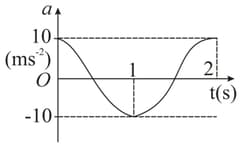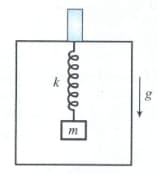(i) The acceleration versus time graph of a particle executing SHM is shown in the following figure. Plot the displacement versus time graph.

(ii) The frequency of oscillation is __________.
(iii) The displacement amplitude is ______.
(iv) At , the velocity of the particle is ______/
(v) The kinetic energy of the particle is maximum at _____ and ______.
(vi) The potential energy is maximum at _______; _______ and _______.


Important Questions on Linear and Angular Simple Harmonic Motion
A linear harmonic oscillator has a total mechanical energy of . Potential energy of it at mean position is . Find
(i) The maximum kinetic energy
(ii) The minimum potential energy
(iii) The potential energy at extreme positions.
The potential energy of a particle oscillating on axis is given as .
Here is in joules and in metres. Total mechanical energy of the particle is .
(a) State whether the motion of the particle is simple harmonic or not.
(b) Find the mean positive
(c) Find the maximum kinetic energy of the particle.
A block of mass is suspended from the ceiling of a stationary elevator through a spring of spring constant ; it is in equilibrium. Suddenly, the cable breaks and the elevator starts falling freely. Show that the block now executes a simple harmonic motion of amplitude in the elevator.

A ball of mass is connected to two rubber bands of length , each under tension as shown in the figure. The ball is displaced by a small distance perpendicular to the length of the rubber bands. Assuming the tension does not change, show that
(a) the restoring force is and
(b) the system exhibits simple harmonic motion with an angular frequency .

